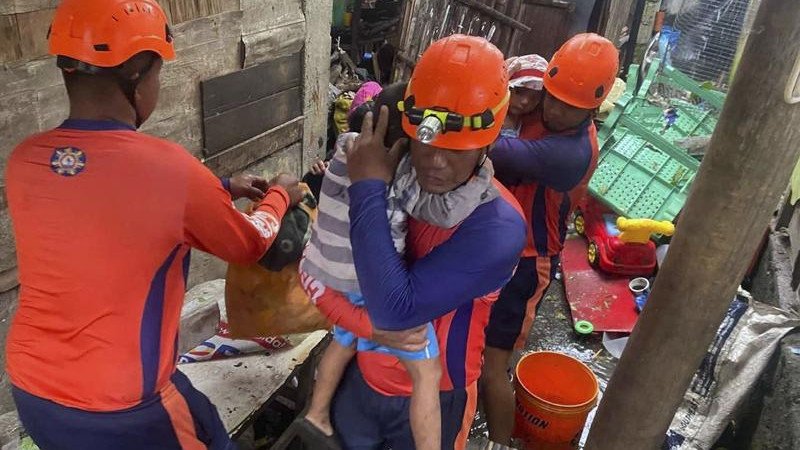Super Typhoon Fung-wong slams Philippines after deadly Kalmaegi disaster

Just days after a tropical cyclone killed more than 200 people in the Philippines, another typhoon - this one even stronger - made landfall in the country’s northeast on Sunday night.
Super Typhoon Fung-wong, known locally as Uwan, is the country’s 21st tropical cyclone this year. The storm has already killed at least two people, and more than a million have been evacuated from its path. Typhoon-strength winds were already battering parts of the country before the storm arrived.
The typhoon made landfall in northern Luzon - the most populous of the country’s three island groups - with the eye moving over Aurora province, more than 120 miles north of Manila.
Sign up to The Nightly's newsletters.
Get the first look at the digital newspaper, curated daily stories and breaking headlines delivered to your inbox.
By continuing you agree to our Terms and Privacy Policy.The archipelago nation of more than 7,000 islands is home to more than 117 million people - more than half of whom live in Luzon. The Philippine government said it expected 30 million Filipinos to be exposed to the typhoon’s hazards.
Emergency workers - already stretched thin in the aftermath of Typhoon Kalmaegi, known locally as Tino, which made landfall on Tuesday - have deployed widely in affected areas.
In the wake of Kalmaegi, President Ferdinand Marcos Jr declared a one-year state of national calamity to hasten relief and rehabilitation efforts. Most of the more than 200 people killed were in Cebu province, to the south.
As it passed over the Philippines overnight, Fung-wong weakened from a super typhoon to a typhoon, according to the Philippine Atmospheric, Geophysical and Astronomical Services Administration (PAGASA).
The super typhoon had maximum sustained winds of about 115 mph near its centre as it approached land, which weakened to about 102 mph in the hours following landfall. Still, there were warnings of wind gusts of up to 170 mph. The Philippines National Weather Service says sustained winds of more than 58 mph and gusts greater than that speed pose an “extreme threat to life and property.”
By Sunday night, entire communities were flooded, not just along the coast, but also in central urban areas. Heavy rainfall and strong wind warnings were in effect over much of Luzon, including Metro Manila, where schools are cancelled.
Photos showed homes brought to the ground and fully submerged in muddy water, power lines toppled over, and dangerously strong winds destroying bridges and other infrastructure.
Relief efforts for evacuees are underway, with meal deliveries and health checkups on offer in some evacuation centres. Because the typhoon’s eye is crossing the country overnight, the full extent of the damage and devastation will only be clear in the morning, and the death toll is expected to rise.
© 2025 , The Washington Post
